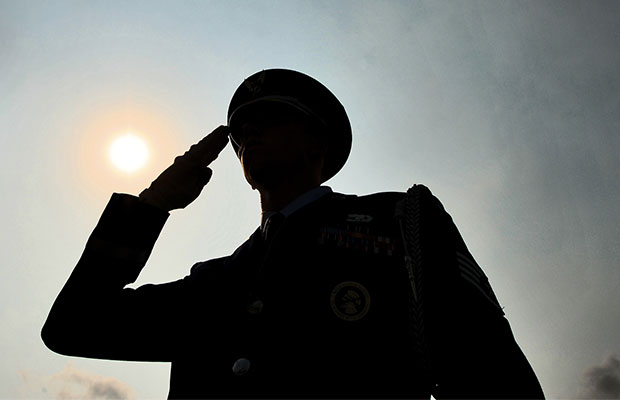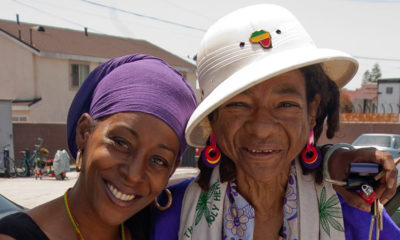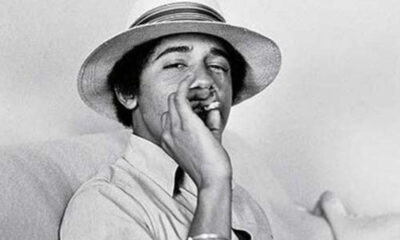Veterans on the Front Lines in Fight for Medical Cannabis
Ricardo Pereyda discovered the medicinal benefits of cannabis to treat his PTSD after serving in Iraq.
Not long after arriving in Baghdad in 2004, Ricardo Pereyda began to see the war differently.
Today the 32-year-old former Army MP explains it simply, “It was so much about profiteering over there,” he says, “I didn’t want to get blown up so someone else could profit.”
Pereyda may have avoided serious physical injury but he saw plenty of others who weren’t as lucky. As his tour dragged on, he witnessed carnage and senseless death on a massive scale. Consequently, he returned to his home in Arizona with a head full of horrors. Like so many vets, Pereyda was suffering from post-traumatic stress disorder (PTSD).
Despite extensive counseling and medical therapy before his discharge, Pereyda experienced an almost constant sense of rage. He had trouble concentrating and felt disconnected from his peers at the local community college in Arizona. His medical therapy consisted of 9-10 different prescriptions a day, including OxyContin and Xanax. But the pills only dulled his senses. Pereyda was so drugged he was frightened to sleep for fear of not waking up.
“My mind was in a dark and nasty place,” he says.
He had about given up the idea of schooling when he learned about Student Veterans of America at the University of Arizona. There he found colleagues who understood his pain and he found a new therapy, medical cannabis.
He had used marijuana as a teenager but didn’t think of it as a medicine until he looked around at his new friends.
“The smart ones,” he says, “were using marijuana.”
Pereyda gave up excessive drinking and turned to cannabis. He started using cannabis in 2010 and notes that his dosing has remained very consistent. In time, he was able to eliminate the prescription drugs, using cannabis approximately three times a day.
“It made me feel carefree,” he now says. “I still can’t smoke an entire joint by myself. I’ll use a little in the morning, some in the afternoon and in the evening to help me get to sleep.”
Pereyda has thrown himself into serving his fellow veterans by successfully lobbying for expansion of Arizona’s medical marijuana law to include PTSD.
“My respect for this medicine compels me to do this,” he says. “I can’t be quiet knowing there are others who may not have discovered the benefits of medical cannabis.”
Veterans have been a part of the fight for medical access to cannabis since the very beginning. In the late 1970s, a lanky Army veteran named Lynn Pierson was living in New Mexico and battling testicular cancer with powerful chemotherapy drugs. Lynn was about to abandon the brutal treatments when his oncologist surprised the native New Mexican and suggested he try marijuana for his nausea and vomiting.
“It was a miracle,” Lynn said simply.
At Albuquerque’s Veterans Affairs (VA) Hospital Lynn shared his discovery with an older cancer patient who was suffering just as he had. The man refused to even try marijuana because of its illegality. When his friend died, Lynn became an activist, working with the nation’s only legal marijuana recipient at that time, Robert C. Randall, to enact a law that would make cannabis available to all residents of the Land of Enchantment. The two young men developed a strategy that successfully led to the nation’s first medical marijuana law, signed in February 1978. It was renamed the Lynn Pierson Therapeutic Research Act following Lynn’s death in August 1978 and continues to bear his name on the more recent Lynn and Erin Compassionate Use Act passed in 2007.
Today many veterans use cannabis for the same reasons as others: cancer chemotherapy, multiple sclerosis, HIV and chronic pain. However, two afflictions – PTSD and traumatic brain injury (TBI) – are inexorably linked to vets. Improved triage and the development of new life-saving techniques in Iraq and Afghanistan has had an unintended consequence of sending home some vets with issues that society has not previously experienced. The results have been often tragic.
Racked with pain and psychological traumas and unable to re-adjust to civilian life, many vets are driven to suicide. It’s now estimated that 22 veterans commit suicide every day although that figure may be too low since statistics don’t always properly categorize the deaths of homeless individuals or frequently miscategorize death-by-cop or single vehicle fatalities.
The patchwork quilt of state medical cannabis laws creates some difficulties when trying to muster a list of those allowing PTSD patients to receive treatment. According to Veterans for Medical Cannabis (VMC) in 2014 there were eight states that specifically include PTSD in the list of eligible medical conditions. In another 10 states, PTSD patients can use medical cannabis because the law is written broadly enough as to allow any physician recommended condition. And, of course, there are four states that have legalized cannabis for adults.
Federal law, however, still classifies cannabis as a drug without “accepted medical value” and this has created a problem for the Veterans Health Administration (VHA). Obligated to uphold federal laws, the agency was initially expelling veterans from any services if the vet tested positive for cannabis during the occasional drug tests that are required for vets who receive opioids.
Although the VHA is obligated to comply with federal law, the organization is also obligated to give veterans the best possible medical care. This left an opening for a remarkable circumvention of federal policy. In 2010, VMC informed the VHA of the problem experienced by vets in legal cannabis states. Michael Krawitz, head of the VMC, wrote a letter to the VA, reminding the agency of its primary mission — serving and caring for vets.
“Once we brought it to the attention of the VHA that veterans were successfully using cannabis in treatment,” Krawitz explained, “it didn’t take long for them to act.”
In a directive issued by the VA’s undersecretary for health, VHA centers were advised “VHA policy does not administratively prohibit veterans who participate in state marijuana programs from also participating in VHA substance abuse programs, pain control programs, or other clinical programs…”
The directive went on to say that “the decisions to modify treatment plans in those situations need to be made by individual providers in partnership with their patients.”
The directive doesn’t allow VHA doctors to prescribe cannabis but it does provide a certain peace of mind for veterans authorized to use cannabis for medical purposes.
The VA has gone further, funding a 2014 analysis of opioid overdose deaths in states with legal medical cannabis. Published in the Journal of the American Medical Association (JAMA), the results showed 24.8 percent fewer overdose deaths in the states with medical cannabis laws.
There are a variety of non-governmental efforts to expand the medical use of cannabis by veterans. In Spokane, Wash. a group called Veterans for Compassionate Care have embarked on an ambitious, multi-disciplinary project to provide the full spectrum of care to vets suffering from PTSD and TBI. The group is seeking funding to acquire property once used as a religious convent. They hope to create a full-service facility with an outpatient clinic that would recommend cannabis where appropriate, an inpatient hospital for vets with addiction problems and even a small hospice wing. Additionally, there will be job training courses and, where possible, all employees will be vets.
Meanwhile, in Colorado, a group called Grow4Vets is helping veterans with medical recommendations for cannabis to grow their own supplies and is providing vets with free supplies of the plant. Other groups, such as Patients Out of Time, have also supported veteran’s studies.
Veterans, like Krawitz and Pereyda, support the gathering of research but don’t feel it should impede access to medical cannabis. Krawitz is continuing to work through the VA, educating bureaucrats about the use of medical cannabis by PTSD patients and stressing the need for a federal agency like the VHA to step forward with some proactive response to the fact of medical cannabis use by vets.
“The VHA still has a long way to go,” Krawaitz says, “but there does appear to be some genuine acceptance of the benefits of cannabis.”
Pereyda doesn’t seem to be quite as sanguine, “The VA will not be the answer for vets any time soon,” he says with a faint edge to his voice. “We vets need to take care of each other and do all we can to educate ourselves and the public about the benefits. There is too much at stake to wait.”
Originally published in issue 13 of Cannabis Now Magazine.























